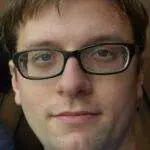Sometimes the 2nd time around is just as much fun as my first time to Deoksugung. That the area has been under renovation / reconstruction work for the past year means it seems to be always changing in some ways.
Some things, however, don’t change, such as the King Sejong monument located front-and-center close to the entrance. What I didn’t catch last time was the hangeul in it’s alphabetical order:
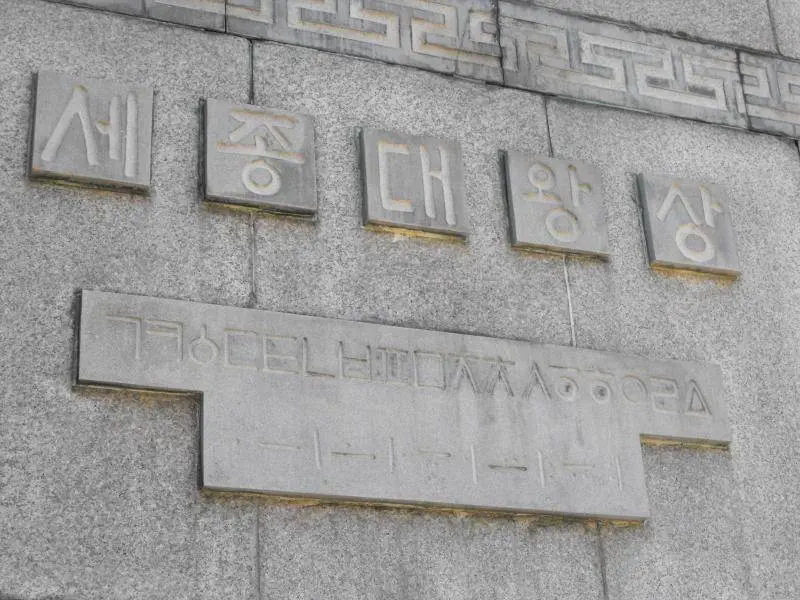
Note the triangle at the very end of the order – one letter that no longer exists in modern-day hangeul.
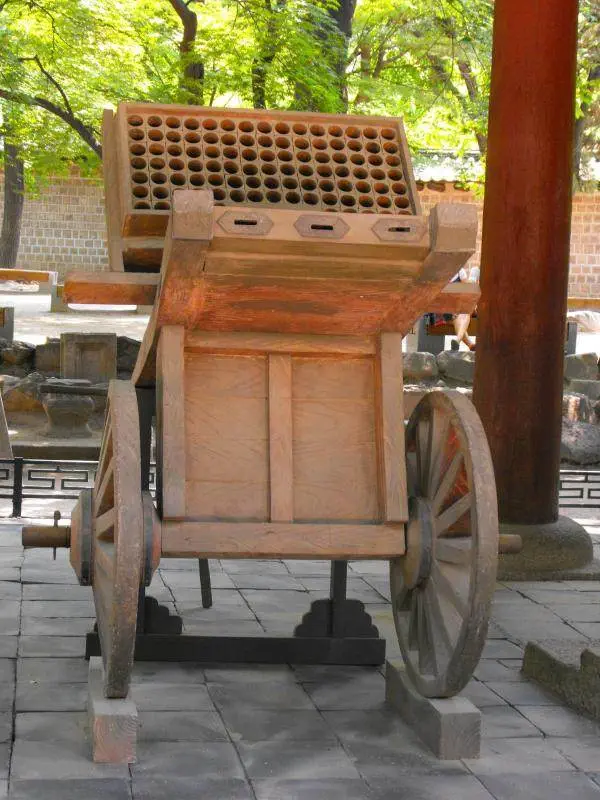
A Singijeon Launcher Carriage – imagine a bamboo arrow with a gunpowder rocket on the back. Used during the Goryeo dynasty, but improved in 1448, it is supposedly the oldest weapon with a blueprint dating back as far as the weapon.
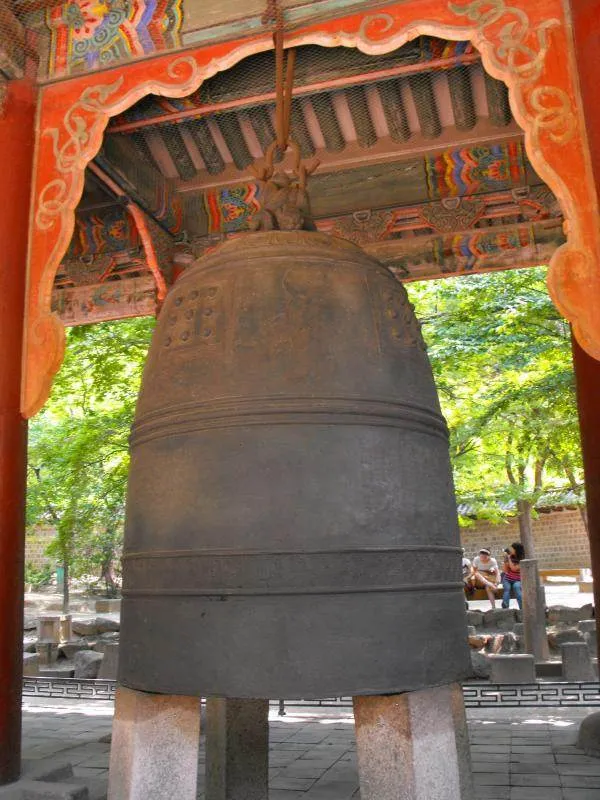
The Heungcheonsa Bell – Originally installed in 1462 as part of a royal family’s administrative temple. After Heungcheonsa was burned down in 1510, the bell moved to Gwanghwamun (gate to Gyeongbukgung palace), Changgyeonggung palace, and eventually here.
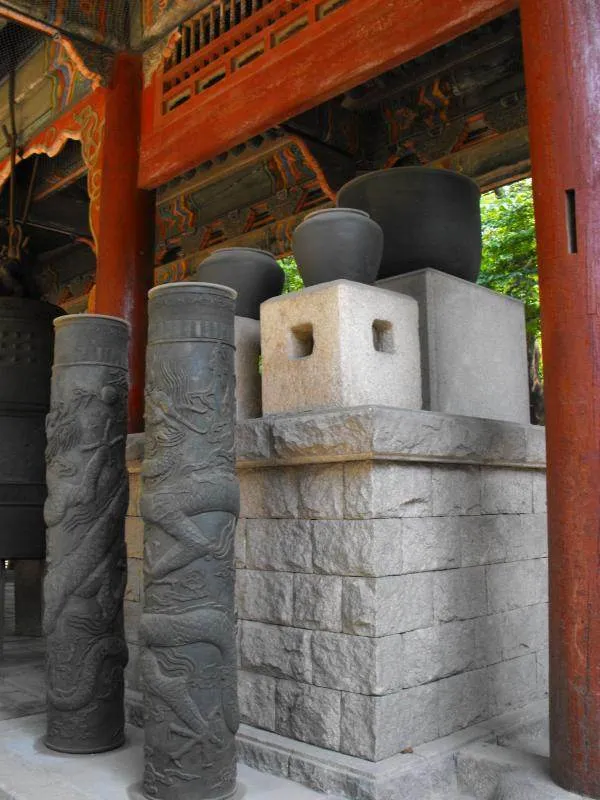
The borugak jagyeongnu, or a water clock. While we’re only looking at the remaining pieces from 1536, try to imagine water flowing from the bowls into the cylinders, with a stick inside the containers moving metal beads to strike bells, drums, and gongs.

A look at Junghwajeon Hall from Junghwamun Gate. This is where King Sunjong was ‘crowned’ by the Japanese occupation after Gojong was tricked into surrendering the throne. That neither of them were at the crowning ceremony is irrelevant, of course.
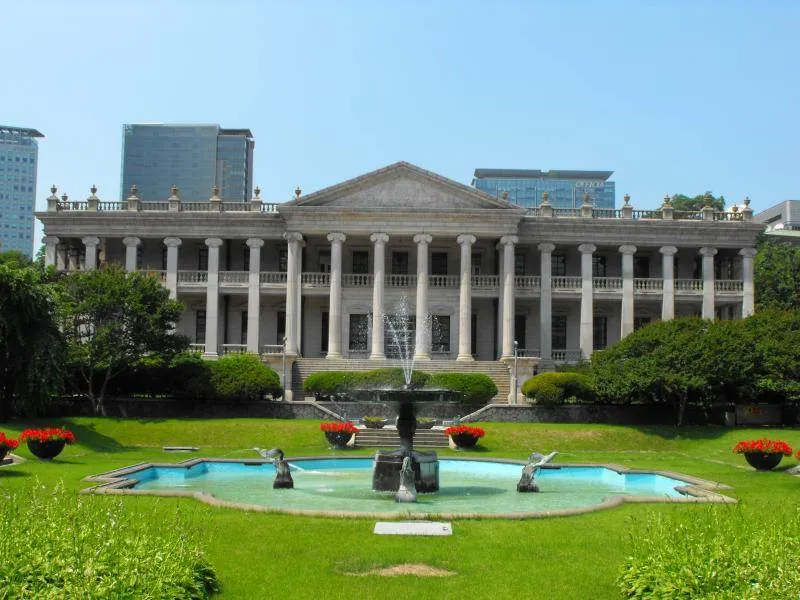
The Great Han Empire (AKA the Korean Empire), which succeeded the Joseon Dynasty, was led by King Gojong to a more modern / Westenized way of things. When this building (Seokjojeon) was completed in 1910, the building featured verandas on three sides, living space for the King, a reception hall, and a waiting room. Also of interest is the fountain. Built in 1938, the fountain flowing went against the traditional beliefs in the laws of nature that water flow down from above.
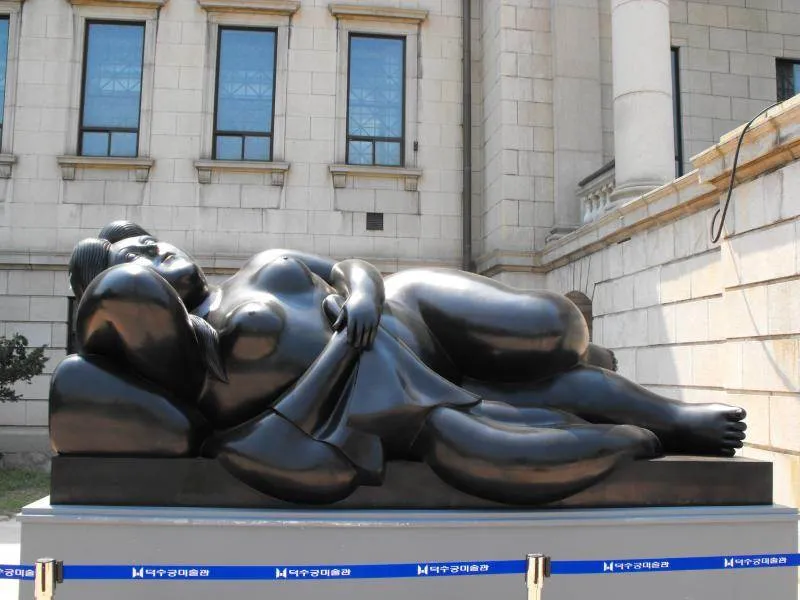
Just outside the National Museum of Art, which was oddly closed today.
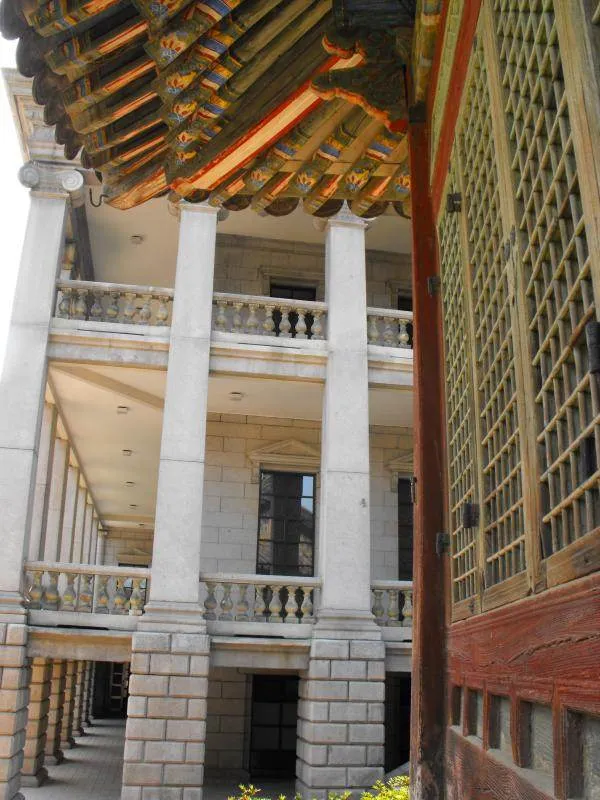
The traditional (Jeukjodang) in the foreground overlooking the modern Western look (the aforementioned Seokjojeon).
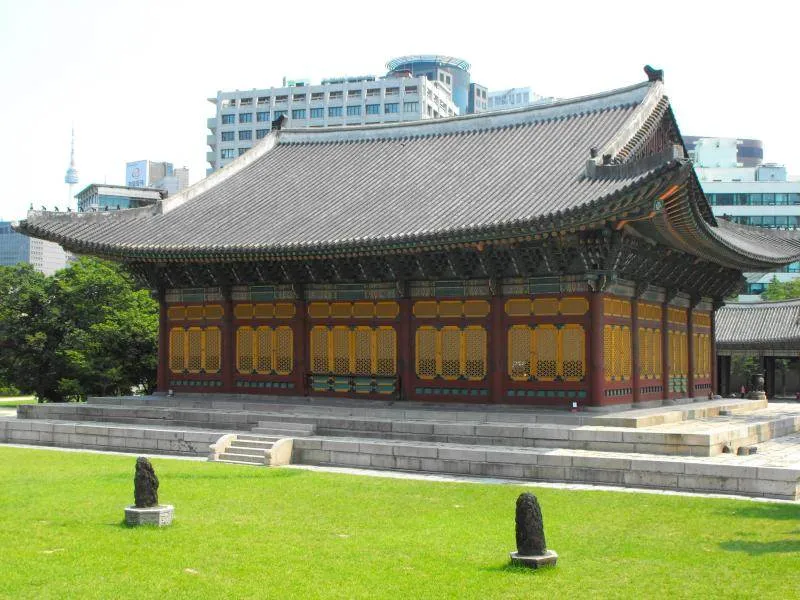
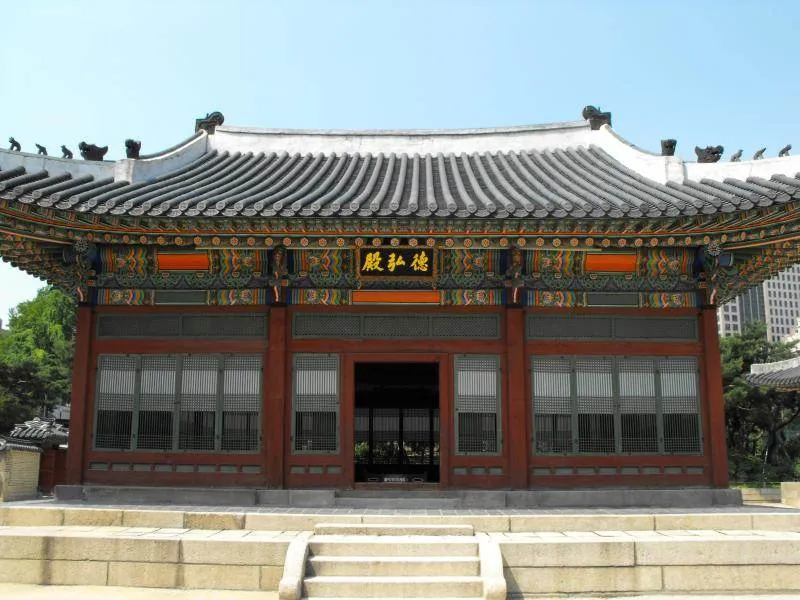
Hamnyeongjeon – according to the booklet, the “royal coffin hall and spirit hall housing his memorial tablet.” Not much to see on the inside, but it’s there. Really.
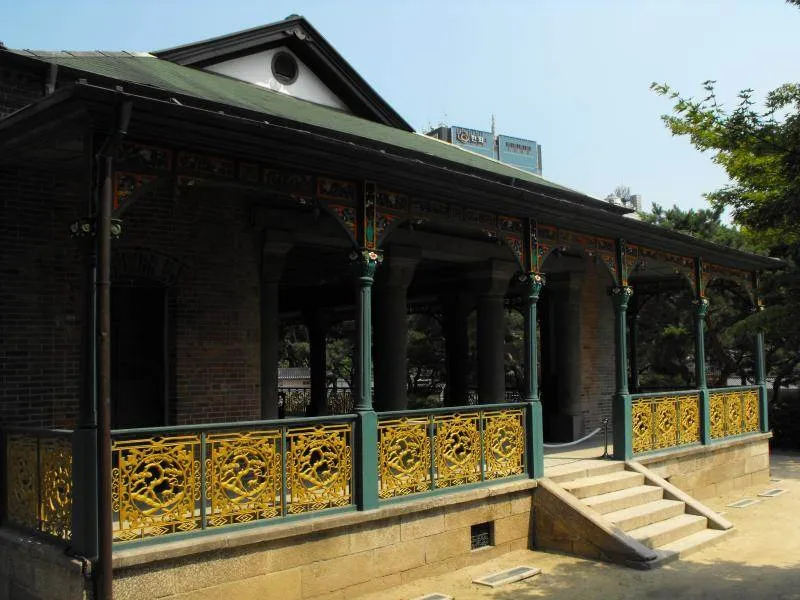
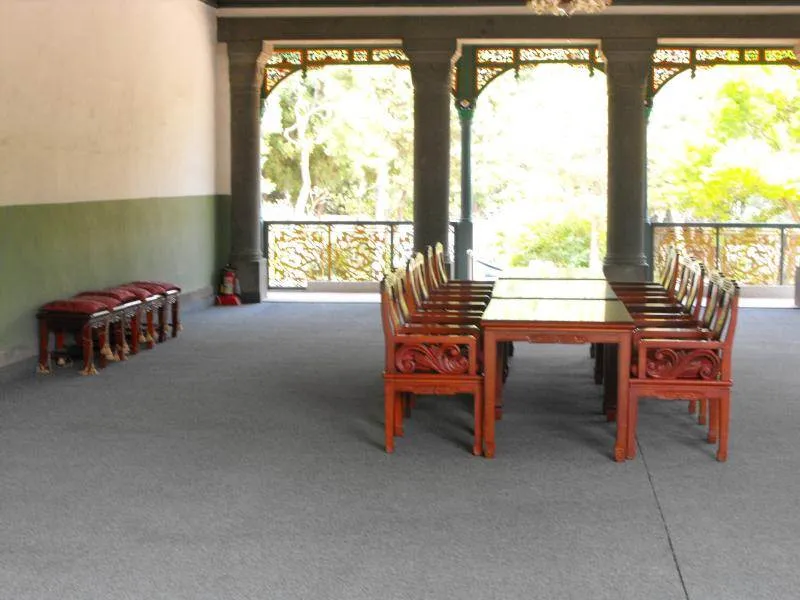
Jeonggwanheon – a combination of modern and traditional architecture, and not a bad place for a king to meet with a diplomat or ambassador. The booklet tells an amusing story about this being the place where the King was almost assassinated by poison in his coffee in 1898.
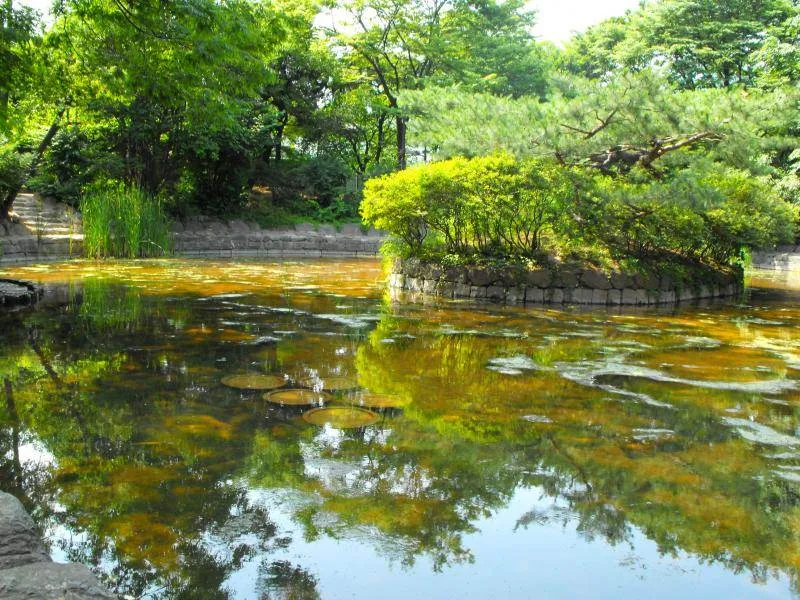
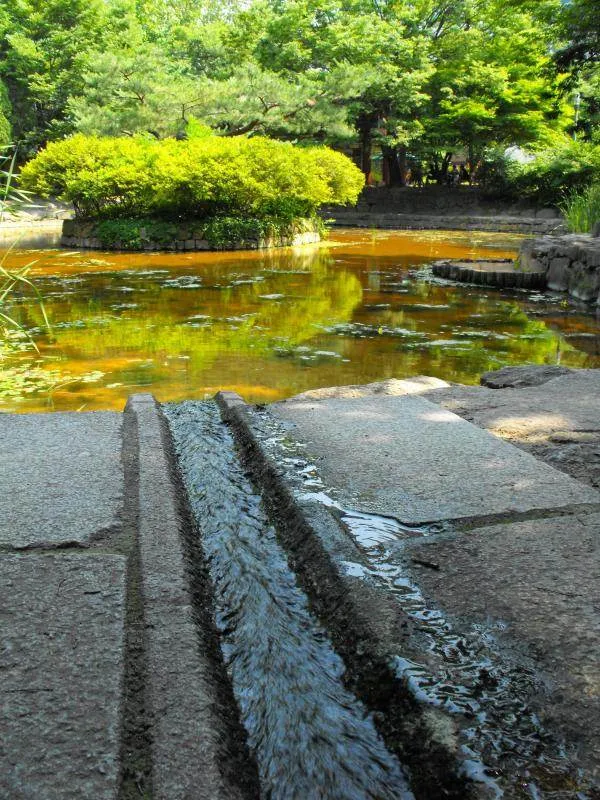
An unnamed pond near the entrance and behind the souvenir shop.
Deoksugung remains one of the few places in Korea to see some older Western-style buildings, especially some with some history behind it. Get in for 1,000 won and spend the afternoon there – with a coffee shop within the palace, there’s even a chance to get some AC if the summer gets to be too hot.
Directions to Deoksugung: Take lines 1 or 2 of the Seoul subway to the City Hall station. Take exit 2 to street level, then look to your right for the outside wall.

